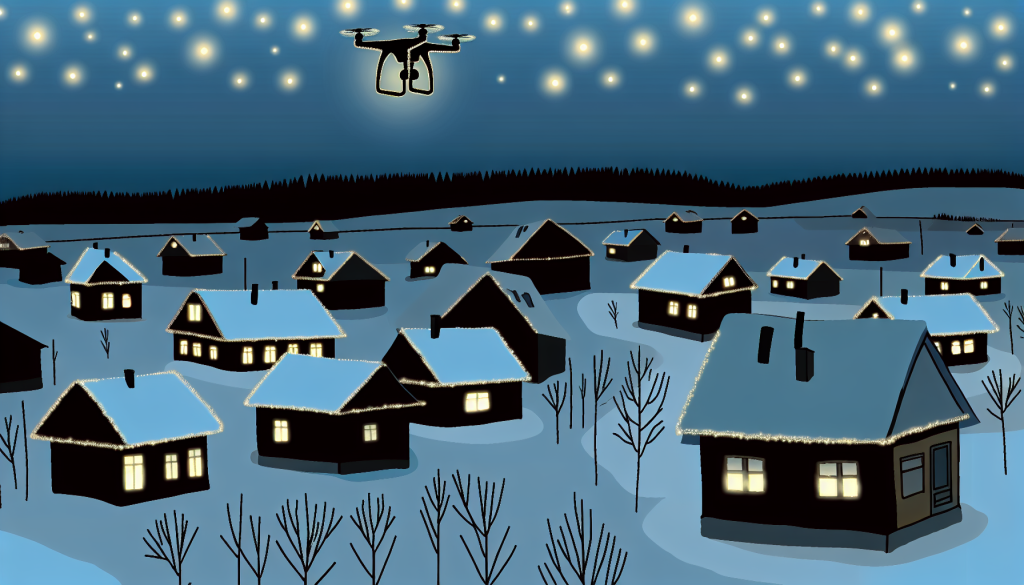Ukraine’s Drone Strikes and Russia’s Response: An Overview
On October 6, 2025, reports surfaced from Russia indicating that a significant barrage of Ukrainian drones had led to widespread power outages in several border regions. This aggressive action marks one of Ukraine’s largest attacks since the onset of the war in February 2022. The evolving dynamics of the conflict reveal a strategic escalation from Kyiv as it aims to counteract Russia’s relentless assault on Ukrainian cities and infrastructure.
The Scale of the Attacks
The Russian Defense Ministry reported that during the recent drone assaults, a staggering 251 Ukrainian drones were downed in a single night. This incident is noteworthy not only for its scale but also because it points to the ongoing operational capabilities of Ukraine’s military. In the Belgorod region, power outages affected around 5,400 residents across 24 settlements, illustrating the immediate impact of these strikes on local communities.
Kyiv’s Strategy
Ukrainian officials have stated that the nation is ramping up its strikes, particularly targeting Russian oil infrastructure. With a clear aim of diminishing fuel resources that finance the Russian military, Ukraine views these operations as legitimate responses to the daily bombardments of their cities and energy networks. The tactical shift underscores a significant moment in the conflict, with both sides grappling for control and influence.
Casualties and Damages
The conflict’s toll continues to rise as Ukrainian drone strikes have also led to injuries in Russia. A refinery in the Krasnodar region was damaged during a recent attack, resulting in two injuries. Conversely, reports from Ukraine describe lethal repercussions from Russian airstrikes, with recent assaults claiming lives and damaging crucial energy facilities, particularly in regions like Chernigiv and Kherson.
Historical Context of Power Struggles
The current pattern of targeting infrastructure recalls similar tactics employed during previous winters, where Russia aimed to cripple Ukraine’s energy grid, leaving millions vulnerable to harsh cold and darkness. This strategy of systematic targeting has become an integral part of both nations’ military tactics, emphasizing the fragility of civilian life in wartime.
Economic Implications
The economic ramifications of these strikes are significant. Ukraine’s proactive measures against Russian oil refineries have not only sparked fuel shortages in various regions of Russia but also led to a rise in petrol prices. These developments are particularly pivotal as they affect local economies and the broader Russian war effort, which relies heavily on energy revenues.
International Perspective
The ongoing exchanges and retaliations speak volumes about the conflict’s complexity and the motivations driving both Ukraine and Russia. International observers are closely monitoring these developments, recognizing the potential for escalation and its implications on regional stability. The conflict remains a significant point of international concern, highlighting the intricate web of military, economic, and humanitarian issues at play.
Conclusion
As the situation continues to evolve, the ramifications of these drone strikes reveal the escalating nature of the conflict. Both Ukraine and Russia are engaged in a high-stakes battle for power, influence, and survival. Understanding these dynamics is crucial for grasping the broader implications of the conflict, not just for the involved nations but for the international community as well.

